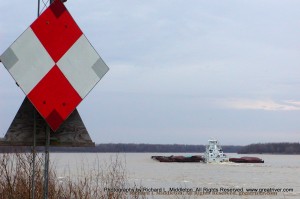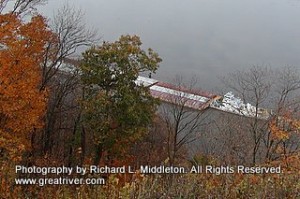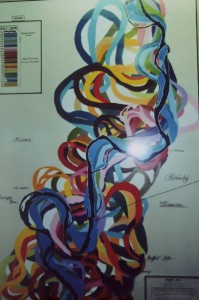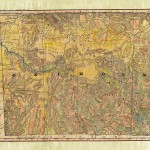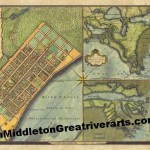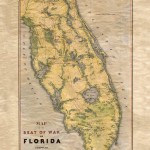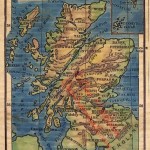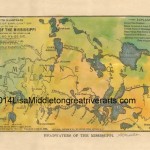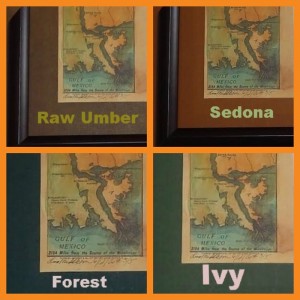THE OHIO RIVER, from the series, TRIBUTARIES OF THE MISSISSIPPI RIVER
c Pat Middleton, greatriver.com
Numerous overnight cruising paddleboats are once more cruising the Ohio River! Our single most popular map of the Mississippi is a Ribbon from 1887 designating all the towns along the river… and map artist, Lisa Middleton, now makes her hand-painted RIBBON MAP of the OHIO RIVER available to all!
Click map image below to visit www.greatriverarts.com>Shop>Ohio River

Ohio River provided by www.greatriverarts.com
The Ohio River begins in Pittsburgh, Pennsylvania at the confluence of the Allegheny River and the Monongahela River, extending roughly 900 miles downstream and ending in Cairo, Illinois. Throughout time, the Ohio River has been called many names by different civilizations. The Shawnees called it Spaylaywitheepi, the Miami tribes, the Causisseppione, the Delawares, Kitonosipi, and the French, La Belle Riviére, meaning “the beautiful river.” It was called the “River Jordan” by slaves escaping to freedom in the North using the Underground Railroad in early 1800s. The name Ohio comes from the Iroquois word, “O-Y-O,” meaning “the great river”.
As early as 700 B.C., the first humans on the river were the Adena culture, followed by the Hopewell culture around 400 B.C. The Adena culture made their mark on the land erecting unique conical burial mounds along the river’s course and its tributaries. The Hopewells had larger earthen mounds in the same area as the Adenas. Later, the Shawnees, Cherokees, Iroquois, and Miamis, used the Ohio River at different periods as a site to launch violent raids, dubbing the river the “River of Blood” by the tribes.
In the 1670s, the French established trading posts along the Ohio River tributaries, including the Beaver, Wabash, and the Scioto Rivers — but the Ohio River remained unexplored. The first European to see the Ohio River was Frenchman Rene Robert Cavelier Sieur de La Salle in 1669. By the 1880s, the Ohio River became an important commercial route, and also a transportation route for families who migrated to establish settlement in the West.
Today, the Ohio River continues to serve as a major artery for transporting coal, grain, steel, and manufactured articles. The Ohio River is still important to communities, providing drinking water and as well as boating, fishing, swimming, and other water sports.
Other available fine art Ribbon Maps include The Mississippi River and the Missouri River. Please click links to view maps and Tributary information!
We also have two FRENCH maps available with details of the OHIO RIVER. Both Maps are also Rich in Mississippi River info. (To study maps at greatriverarts.com use the Hi Rez magnifying glass that pops up when you hold your cursor over an image.)
Les Etats Unis late 16th Century

Carte de La Louisiane. Early 16th Century
Return to the MISSISSIPPI RIVER HOME PAGE at greatriver.com

